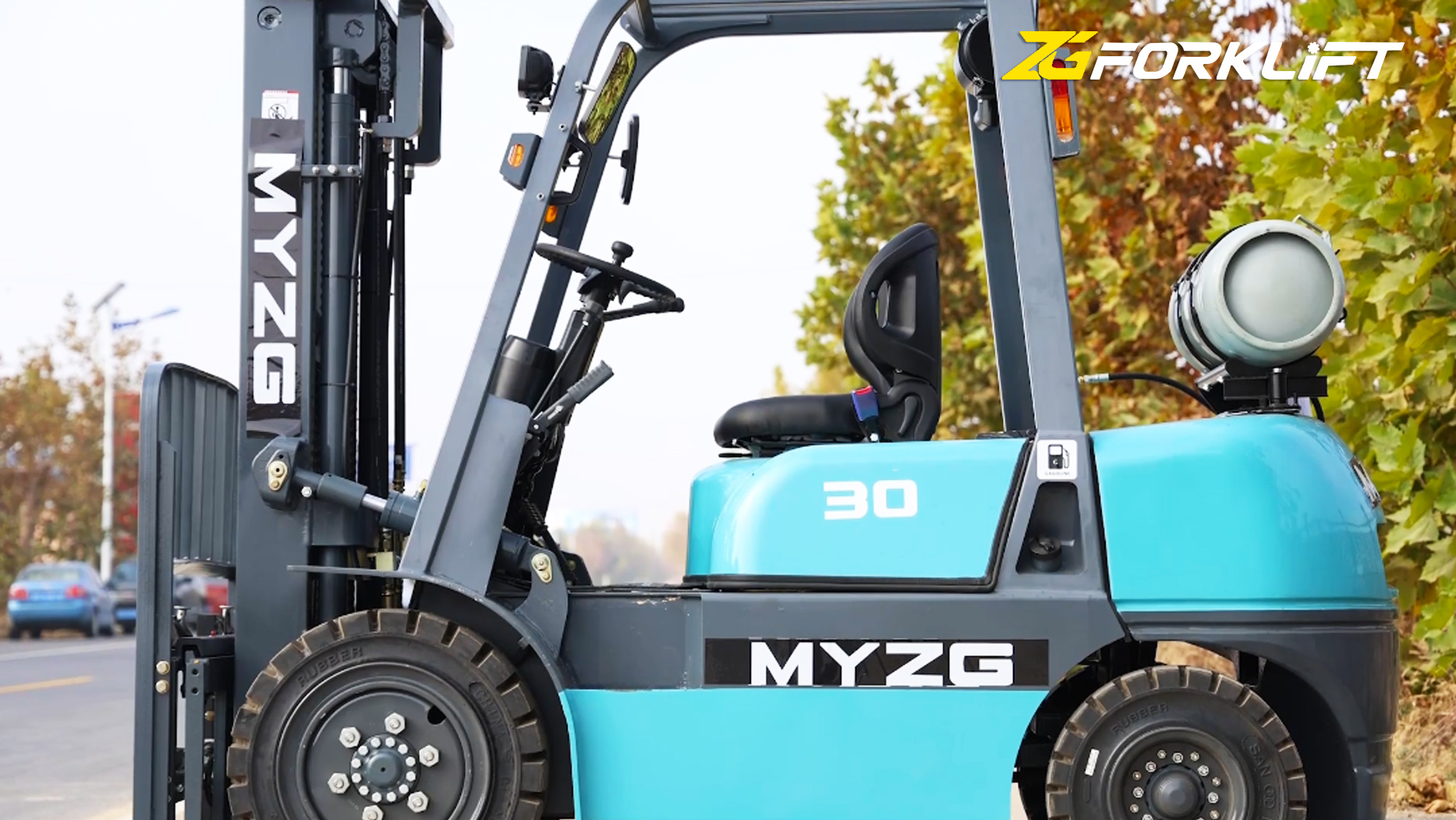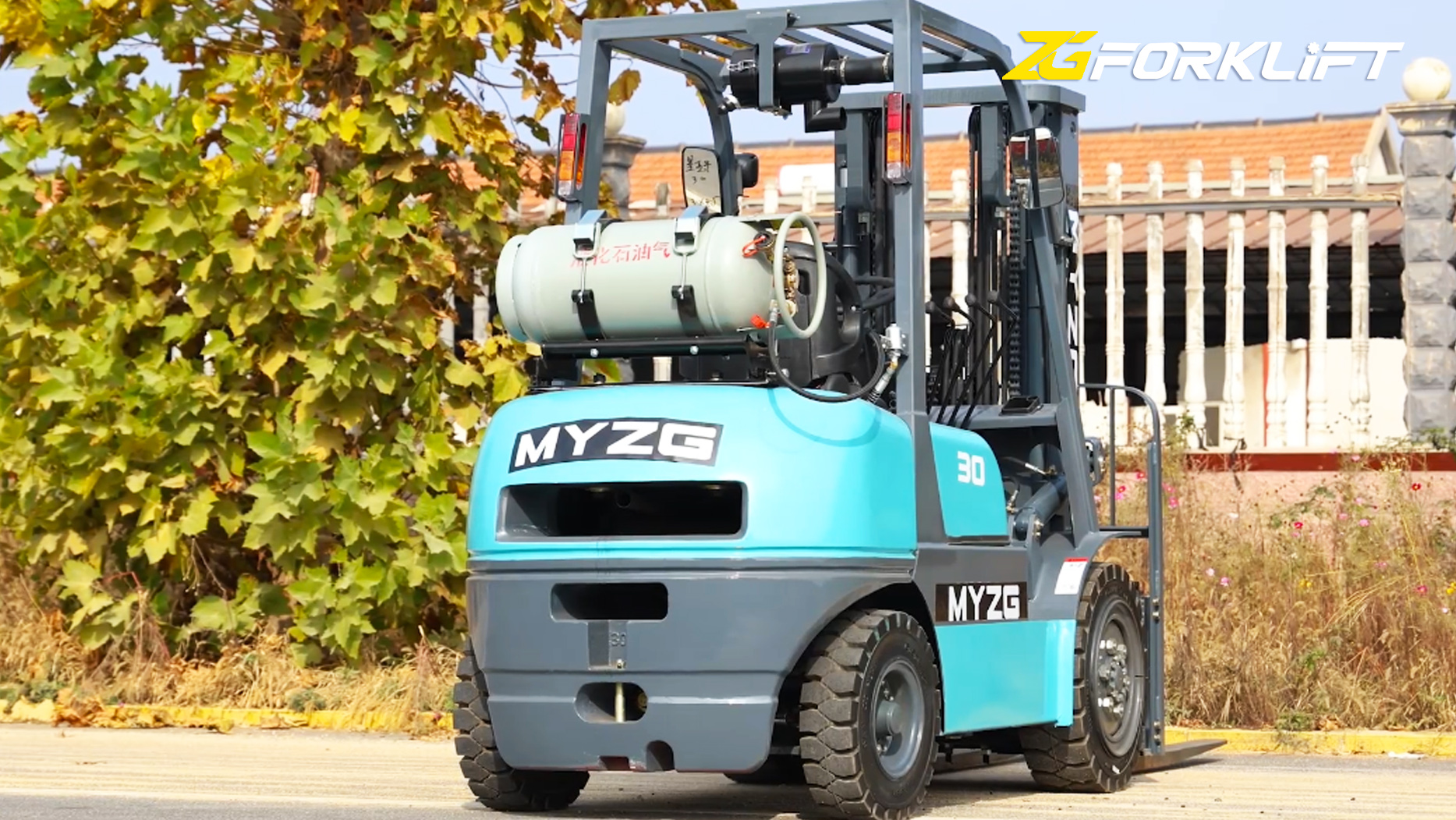A Comprehensive Guide to LPG Forklift Safety
Liquefied Petroleum Gas (LPG) forklifts are a common sight in warehouses and industrial settings, prized for their power, relatively clean emissions compared to diesel, and quick refueling capabilities. However, the question of whether they can be used indoors is not a simple yes or no. While LPG forklifts can be used indoors under certain conditions, it's crucial to understand the safety implications, regulations, and best practices involved. This article provides a comprehensive guide to the safe use of LPG forklifts indoors.
Understanding LPG Forklifts:

LPG forklifts are internal combustion engine-powered machines that run on propane or butane. They offer a balance between the power of diesel forklifts and the cleaner emissions of electric forklifts.Key advantages of LPG forklifts include:
High Power Output: LPG engines provide ample power for lifting heavy loads and navigating inclines.
Fast Refueling: Replacing an LPG cylinder is quick and easy, minimizing downtime.
Lower Upfront Cost: Compared to electric forklifts, LPG forklifts typically have a lower initial purchase price.
Suitable for Indoor and Outdoor Use: Unlike diesel forklifts, which are primarily designed for outdoor use, LPG forklifts can be used both indoors and outdoors (with proper precautions).
The Challenge of Indoor LPG Forklift Use: Emissions and Ventilation:
The primary concern with using LPG forklifts indoors is the emission of combustion byproducts. While cleaner than diesel, LPG combustion still produces:
Carbon Dioxide (CO2): A greenhouse gas and asphyxiant in high concentrations.
Carbon Monoxide (CO): A colorless, odorless, and highly toxic gas that can cause rapid poisoning.
Nitrogen Oxides (NOx): Pollutants that contribute to respiratory problems and smog.
Water Vapor: Can contribute to humidity levels in enclosed spaces.
Unburned Hydrocarbons: Can contribute to air pollution.
The key to safely using LPG forklifts indoors is managing these emissions through adequate ventilation.
Factors Affecting Indoor LPG Forklift Safety:
Several factors influence the safety of using LPG forklifts indoors:
Ventilation: This is the most critical factor. Proper ventilation is essential to dilute and remove combustion byproducts, maintaining safe air quality. Natural ventilation (open doors and windows) may be sufficient in some cases, but mechanical ventilation (fans, exhaust systems) is often required, especially in enclosed spaces or when multiple forklifts are operating.
Forklift Emissions: Modern LPG forklifts are designed to meet emission standards, but regular maintenance is crucial to ensure optimal performance and minimize emissions. Check for leaks and ensure the engine is properly tuned.
Space Size and Ceiling Height: Larger spaces with higher ceilings provide better natural ventilation and allow for greater dispersion of emissions. Smaller, confined spaces require more robust mechanical ventilation.
Number of Forklifts Operating: The more LPG forklifts operating in a space, the greater the emissions and the more critical proper ventilation becomes.
Duration of Operation: Prolonged use of LPG forklifts indoors increases the risk of accumulating harmful emissions. Limit operating time when possible and ensure adequate ventilation is maintained.
Operator Training: Operators must be trained on the safe operation of LPG forklifts, including proper refueling procedures, recognizing signs of poor ventilation, and understanding the hazards of carbon monoxide poisoning.
Carbon Monoxide Monitoring: Installing carbon monoxide detectors in areas where LPG forklifts operate is highly recommended. These detectors provide an early warning of potentially dangerous CO levels.
Oxygen Level Monitoring (Less Common): In very confined spaces, monitoring oxygen levels might also be necessary, as combustion consumes oxygen.
Local Regulations and Standards: Check local regulations and safety standards regarding the use of LPG forklifts indoors. These regulations may specify ventilation requirements, permissible emission levels, and other safety measures.
Best Practices for Indoor LPG Forklift Use:
Maximize Ventilation: Ensure adequate ventilation through natural means (open doors, windows) or mechanical systems (fans, exhaust systems). Consult with a ventilation specialist if necessary.
Regular Maintenance: Perform regular maintenance on LPG forklifts to ensure optimal engine performance and minimize emissions.
Use Carbon Monoxide Detectors: Install and maintain carbon monoxide detectors in areas where LPG forklifts operate.
Train Operators: Provide comprehensive training to operators on safe LPG forklift operation, refueling procedures, and recognizing ventilation issues.
Limit Operating Time: Minimize the amount of time LPG forklifts operate indoors, especially in confined spaces.
Monitor Air Quality: Regularly monitor air quality, particularly CO levels, in areas where LPG forklifts are used.
Consider Alternative Fuel Sources: If feasible, consider using electric forklifts for indoor applications, as they produce zero emissions at the point of use.
Develop a Safety Plan: Create a comprehensive safety plan that addresses all aspects of indoor LPG forklift use, including ventilation, maintenance, operator training, and emergency procedures.
Consult with Experts: If you have any doubts about the safety of using LPG forklifts indoors, consult with a qualified safety professional or ventilation specialist.
Regulations and Standards:
Regulations regarding indoor LPG forklift use vary by jurisdiction. It's crucial to consult local and national regulations, as well as relevant industry standards, to ensure compliance. These regulations may cover topics such as:
Ventilation requirements: Minimum airflow rates, exhaust system specifications.
Emission limits: Maximum permissible levels of CO, NOx, and other pollutants.
Carbon monoxide monitoring: Requirements for detector installation and maintenance.
Operator training: Qualifications and certification requirements.
Storage and handling of LPG cylinders: Safe storage practices, cylinder inspection procedures.
Conclusion:
While LPG forklifts can be used indoors, it's essential to prioritize safety and ensure adequate ventilation to manage emissions. By following best practices, complying with regulations, and prioritizing operator training, you can minimize the risks associated with indoor LPG forklift operation. However, if you have any doubts about the safety of using LPG forklifts in your specific environment, consult with a qualified safety professional or consider alternative fuel sources like electric forklifts. The health and safety of workers should always be the top priority.
Post time:Feb.17.2025


